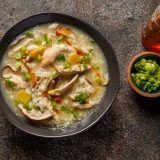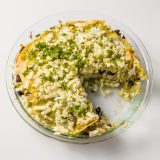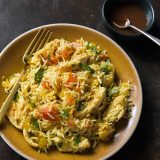
A Better Sip of Sake
When it comes to drinking sake, how you serve it matters as much as what you serve. While many sakes are enjoyed hot, premium sakes offer complexities best appreciated when served chilled—but not too cold, which also blunts delicate aromas and flavors. For top-shelf sakes, the ideal temperature falls somewhere between 50°F and 59°F. Striking this balance can be tricky. That’s why we love the Yurari Otokomae Tableware Sake Set. Made by artisans in Japan’s Mino province, this sleek sake set combines traditional craftsmanship with modern lines. Its cleverly designed carafe features a special bowl for crushed ice attached by fasteners that allow it to swivel and stay upright when pouring. This not only gently chills the sake to the perfect temperature without diluting it, it also keeps the ice cubes corralled when pouring into the set’s two sake cups. Available for $120 at 177milkstreet.com/jf22-sake.
Textiles for Brighter Tables
Handcrafted by artisans in Hidalgo, Mexico, the colorful table runners from Guelaguetza Designs are painstakingly hand-stitched with care and skill, using techniques passed down for generations. Said to be inspired by ancient cave drawings, their whimsical designs draw on the traditional artwork of the Otomi people native to the region—a kaleidoscopic vision of the flora and fauna of central Mexico. Each piece can take weeks to complete, and no two are exactly alike. Available for $150 at 177milkstreet.com/jf22-runner.
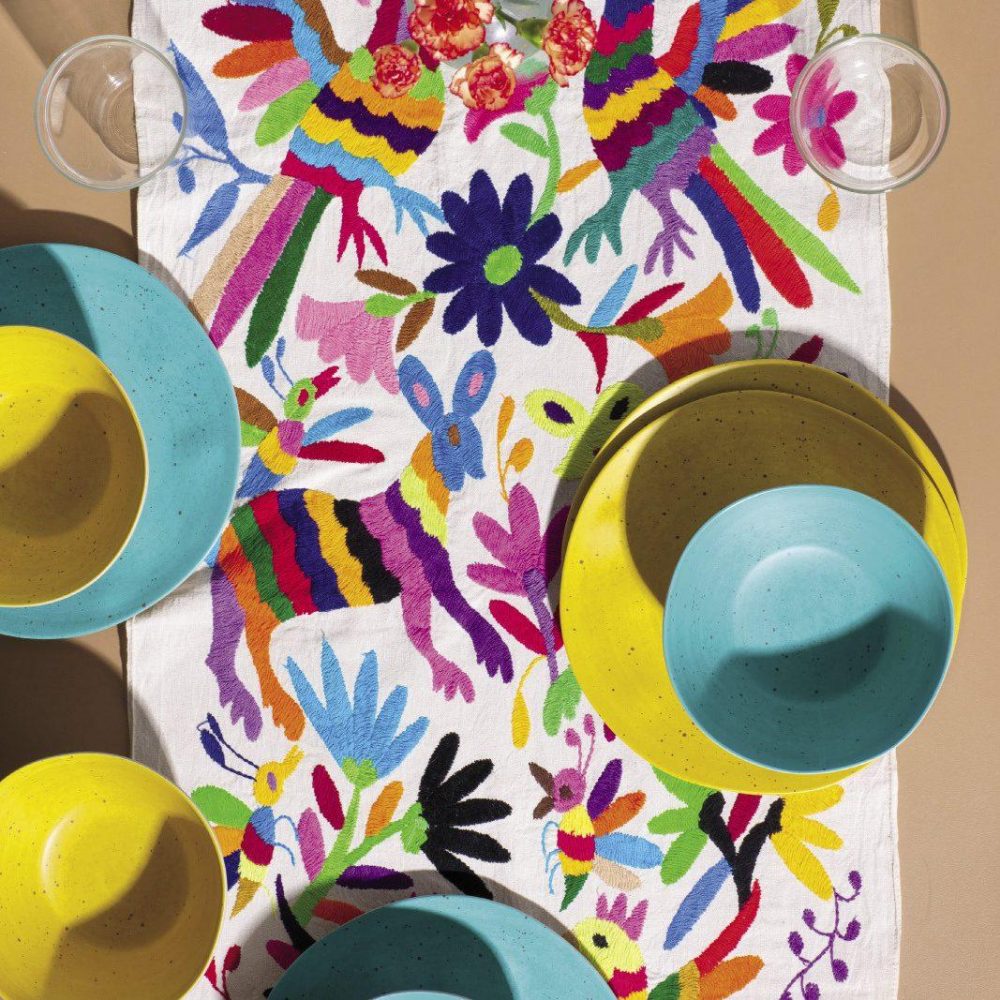
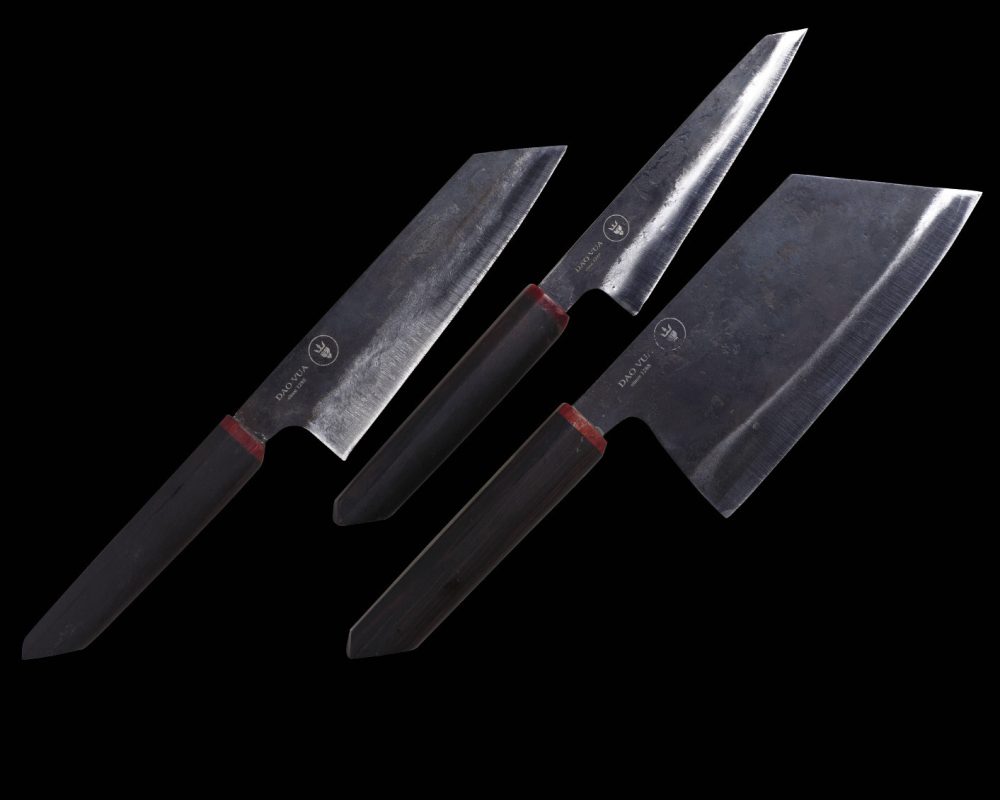
A Cut Above
On our most recent journey to Vietnam, we reveled in the fresh, bold flavors, from riots of chopped herbs and chilies to thin-sliced meats sizzling on the grill. And the perfect tools for such tasks are Dao Vua knives. They’re hand-forged from upcycled leaf spring steel: a high-carbon, chromium-laced steel designed for car parts that also happens to be excellent for heavily used knives, able to be sharpened to a razor edge. The striking matte black finish makes the knives virtually nonstick and protects the steel from moisture. The curved-belly cleaver works just as well for slicing through cabbage heads as it does for finely mincing garlic; the honesuki excels at breaking down poultry; and the bunka knife is a kitchen workhorse whose sharp, swooping tip makes it ideal for detail work. Available starting at $59.95 at 177milkstreet.com/jf22-knives.
Fresh Soba We Love
When a craving for soba strikes, nothing but a bowlful of springy, slurpable noodles will do. And the freshest soba we’ve found comes from Honda Shoten, a fifth-generation producer who creates Izumo-style soba—widely considered to be the best variety in Japan. These soft, fresh noodles are made from equal parts buckwheat flour and wheat flour (milled in-house), yielding an especially bouncy yet tender texture and fuller flavor. They’re equally good eaten hot in a dashi-based broth, or served chilled with a dashi-soy dipping sauce accompanied by toppings such as nori, scallions and daikon. We also like them in noodle salads and stir-fries. Or, do as the Izumo locals do, and prepare them in the kamaage fashion, by using the starchy water the noodles were cooked in as the base, adding soy sauce and any desired garnishes. Packs of two are available for $9.95 at 177milkstreet.com/jf22-soba.
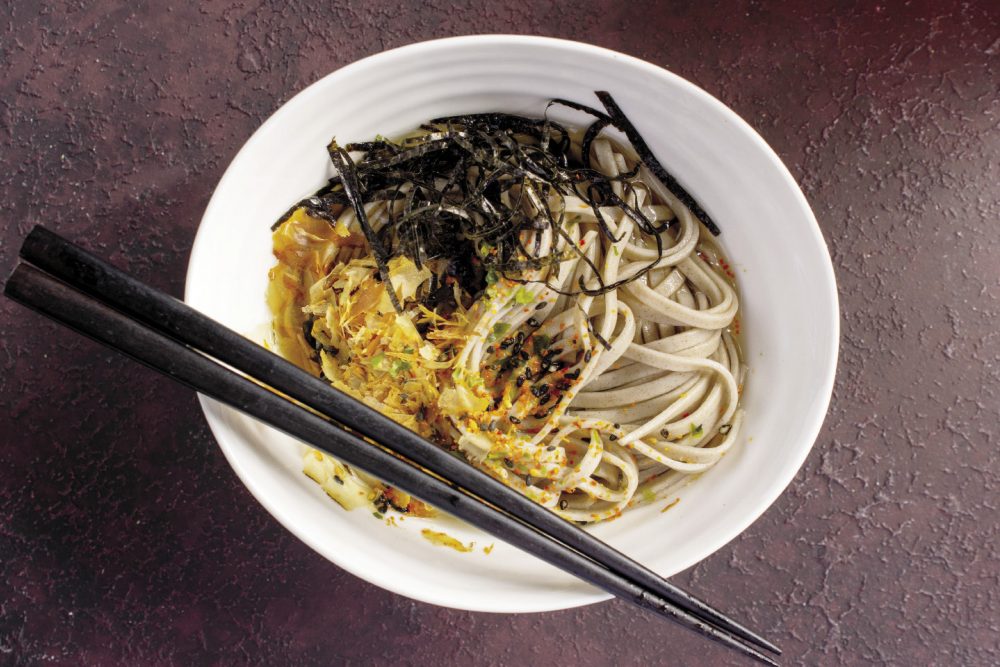
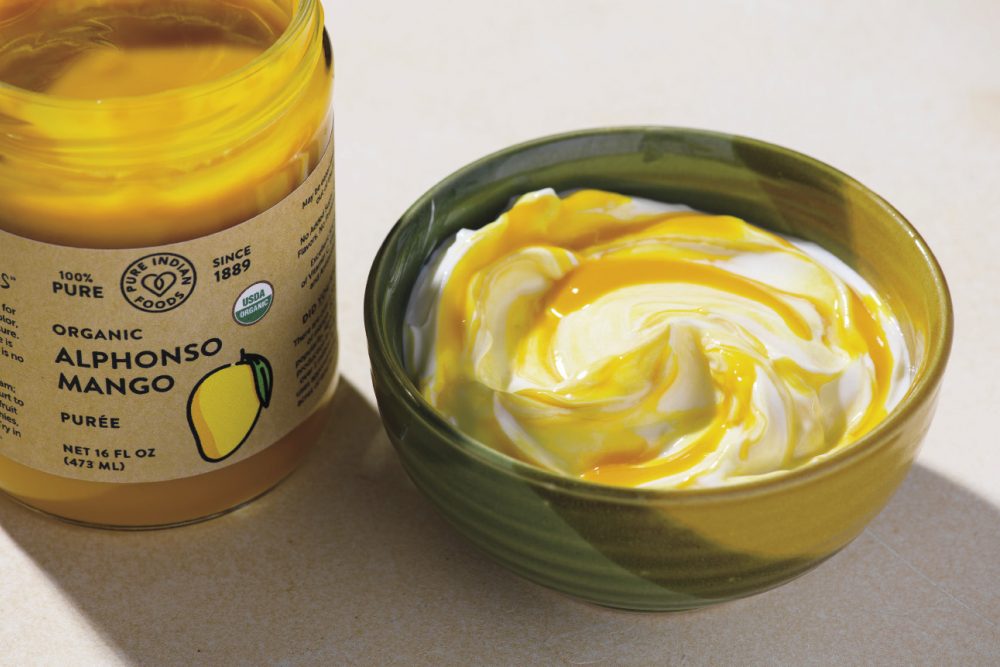
Mango, Pure and Simple
Among the hundreds of mango varietals in India, one reigns supreme: the Alphonso mango, renowned for its creamy, honey-sweet flesh. This “king of mangos” has an extremely short season and can only thrive in a specific climate. One of the best (and most convenient) ways to enjoy this rare treat comes from Pure Indian Foods. The company picks the fruits at their peak and blends them into a luscious puree—with no artificial sweeteners or unnecessary additives. The result is as rich and bright as biting into a ripe, juicy Alphonso mango. We drizzle it over ice cream, swirl it into yogurt, and even mix it into a glaze for brushing onto a cake in lieu of icing. On the savory side, we use it to add a tropical dimension to barbecue sauces and salad dressing. And it’s ready-made for cocktails—trust us, it makes the world’s best daiquiri. Available for $12.95 at 177milkstreet.com/jf22-mango.
Cast Iron Magic
We love cast iron for cooking—but we don’t always love its clunky heft. So we were delighted to discover an attractive solution in Oigen Yaki Yaki Grill Pans. Oigen specializes in cookware whose svelte design belies its rugged construction. We find that the dosshiri (large) pan is just the right size for searing anything from asparagus to filet mignon. Best of all, it duals as a serving vessel: Simply set the pan (and its still-sizzling contents) on its cedar trivet and pop off the ingenious removable handle. Available for $140 at 177milkstreet.com/jf22-grill.
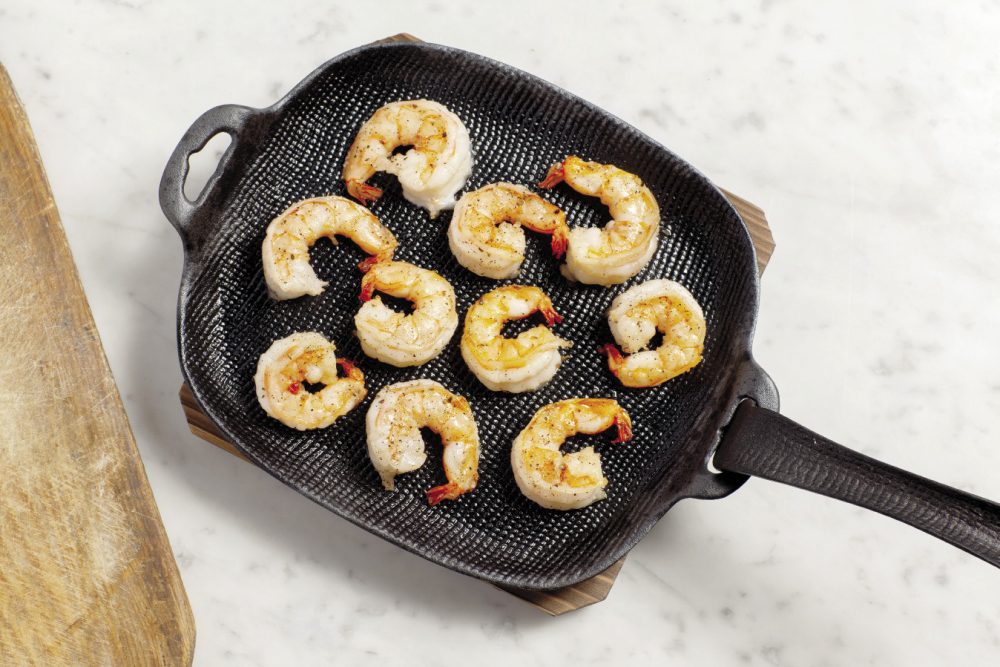
Making the Most of Leftover Chicken
Whether it’s the spare bits from a supermarket rotisserie chicken or the remnants of a home-roasted whole bird,
leftover chicken is a weeknight dinner workhorse. We asked how the members of our Milk Street Facebook Community make the most of leftover chicken and were impressed by the creativity.
Charita Sinha of Shrewsbury, Massachusetts, uses it to whip up a weeknight-easy dinner that echoes the flavor of biryani, a time- and labor-intensive South Asian dish of spiced rice and meat. Sinha likes to garnish the rice with the Indian snack called bhujia, which resembles crunchy noodles; toasted sliced almonds also work nicely.
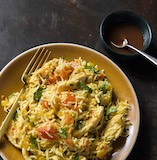
Cindy Chapman of Fresno, California, makes a flavorful casserole by layering the chicken, black beans and tortillas, adding salsa verde and sour cream, then baking to bring the tastes and textures together. Cotija cheese and fresh cilantro are the finishing touches that add bold flavor.
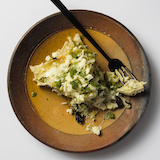
And Eunji Choi of New York City uses the Instant Pot to pressure-cook leftover chicken in water or broth along with rice, aromatics and other ingredients to make a quick, easy congee porridge. For our stovetop version, we use short-grain rice (Arborio rice also works) and a combination of water and chicken broth, plus fresh shiitake mushrooms for their earthy flavor.
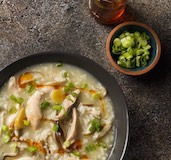
For Milk Street’s versions of all three recipes, go to 177milkstreet.com/communityrecipes.
